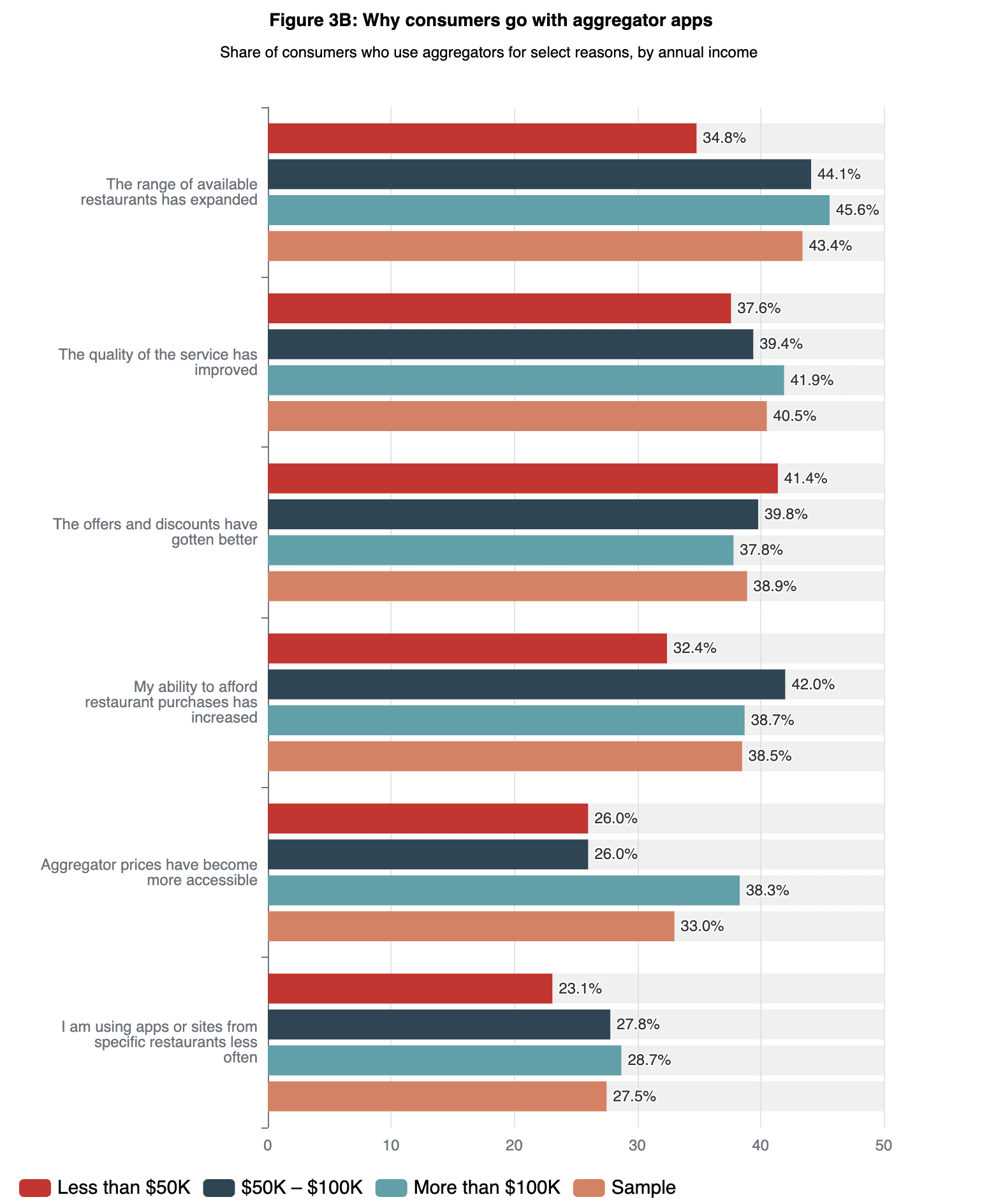Aggregators Drive Affordability With Middle-Income Consumers

Aggregators may struggle to attract low-income consumers, but they are making strides with the middle tier.
By the Numbers
According to research from PYMNTS’ exclusive report “Connected Dining: Third-Party Restaurant Aggregators Keep the Young and Affluent Engaged,” 42% of those who earn between $50,000 and $100,000 a year stated that they use aggregators because their ability to afford restaurant purchases has increased.
In contrast, only 32% of those who earn less than $50,000 a year and 39% of those who earn more than $100,000 said the same.

The Data in Context
Affordability has indeed been a high priority for major restaurant aggregators. DoorDash, for instance, the nation’s leading third-party restaurant delivery platform, has been focused on driving adoption of its DashPass subscription program, which offers free delivery for $9.99 a month and aims to counteract consumers’ hesitation about the cost of the channel.
On the aggregator’s last earnings call, then-Chief Financial Officer Prabir Adarkar (now president and chief operating officer) discussed the company’s ambitions for the program.
“There’s a lot of room to grow,” Adarkar said. “If you think about the size of the DashPass program, 15 million subs. It’s still a far cry from other programs, whether it’s the number of Netflix members or Prime subscribers. There’s a lot of room for us to continue growing, and we’re happy with the pace of growth historically, and we’re not seeing any signs of that slowing down.”
Similarly, Uber CEO Dara Khosrowshahi shared on the company’s most recent earnings call that its tech enables “optimization around cost per transaction” and that its Uber One free delivery and discounted rides subscription leverages high levels of discounting early on to drive greater revenue down the line.

